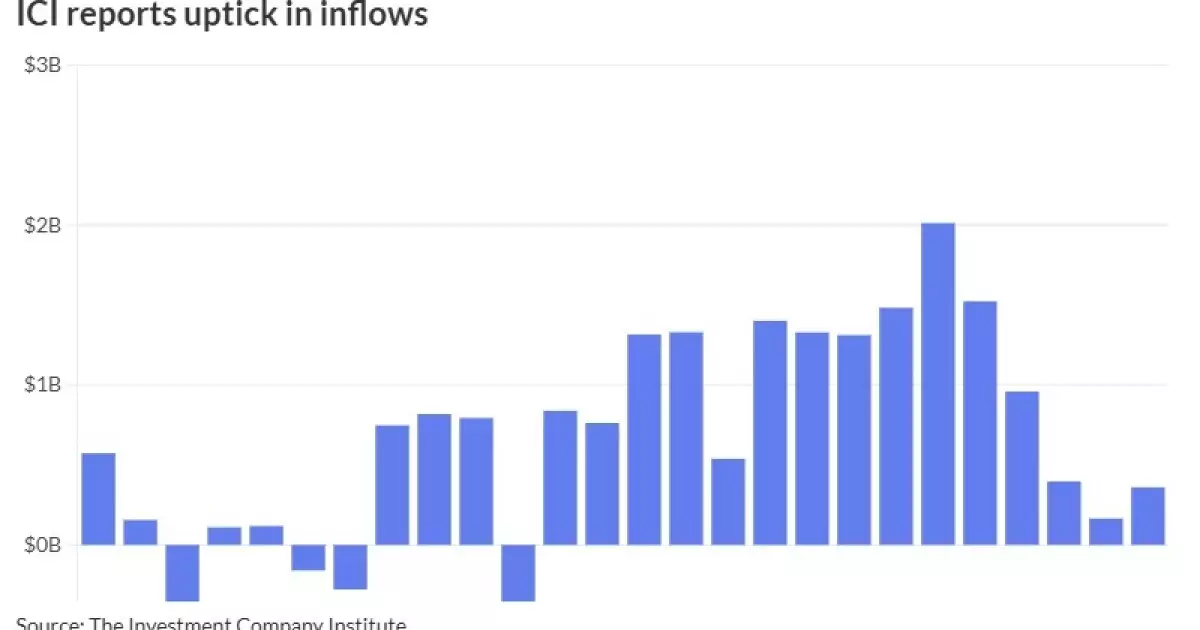The municipal bond market is experiencing intriguing changes as investors engage with varying yield curves while navigating broader economic fluctuations. Recently observed trends reveal a mixed interplay between municipal securities and U.S. Treasury (UST) bonds, coupled with data reflecting notable inflows in municipal bond mutual funds. This evolution warrants a closer look at the hows and whys underpinning the current landscape of this market.
Yield Curves and Performance Metrics
In the current market environment, municipal bonds are exhibiting resilience against a backdrop of a weaker UST market. While the UST yield curves experienced declines ranging from three to four basis points, municipal bonds, particularly those rated triple-A, have seen minimal movement. The distinctions in performance metrics highlight an essential narrative where municipal bonds are outperforming their federal counterparts significantly this month.
As per Refinitiv Municipal Market Data, the ratios comparing municipal to UST yields indicate that over a breadth of time horizons—two years, five years, ten years, and thirty years—municipal bonds remain compelling options for investors seeking reliability and relatively steady income streams. The municipal-to-U.S. treasury ratios have dipped to 61% for two-year bonds, indicating a continued preference for tax-free income that municipal bonds offer, especially in changing interest rate conditions.
Data from the Investment Company Institute reinforces the positive sentiment towards municipal bonds. The recent report detailing inflows of $360 million into municipal bond mutual funds—marking the 14th consecutive week of positive inflows—illustrates a robust appetite for these securities. Researchers highlight that, despite a decreased but still significant inflow into exchange-traded funds (ETFs), the overall market remains buoyed by sustained interest in municipal mutual funds.
The systemic shift toward municipal securities can be attributed to their favorable tax treatment, particularly in light of rising interest rates that make alternative investments less attractive. Moreover, the yield on tax-free municipal money market funds has climbed to an average of 2.95%, providing a solid alternative against the challenges presented by inflationary pressures and volatility in traditional equity markets.
Investment Strategies: A Search for Yield
Market analysts have noted a growing trend where investors are actively searching for yield, particularly in high-yield sectors of the municipal bond market. Spotting an opportunity, many traditional and crossover municipal buyers are diversifying their portfolios to capture a near 7% annual gain on yields. This quest for higher returns becomes all the more crucial, especially when juxtaposed against UST performance, which fell behind with a modest return of -0.40% in November alone.
With institutional interest in high-yield municipal bonds on the rise, investors are attracted not only to the nominal yields but also to the potential for capital gains amidst a market that values issuer credit quality. As demand for high-coupon offerings—such as the Houston Airport project bonds—illustrates, the strategic choice of higher-yielding issues over traditional sector benchmarks has resulted in favorable comparisons, albeit with different risk profiles.
The primary market for municipal offerings remains vibrant, characterized by significant transactions and varied interest rates. Recent issuances, such as Goldman Sachs pricing over $606 million in transportation bonds for Connecticut, reflect a handy range of tranches that cater to institutional buyers with different risk appetites. Such offerings underscore the sophisticated financing strategies developed by state and local issuers to meet the ever-evolving infrastructure demands while working within budgetary constraints.
Furthermore, competitive issuers like the Santa Barbara Finance Authority have attracted attention with attractive pricing, indicating healthy competition among issuers. By strategically utilizing financing techniques and catering to investor appetite, municipal entities can secure favorable funding conditions, ultimately benefiting public projects and taxpayers alike.
The municipal bond market stands at an intriguing crossroad, now more than ever embodying diverse investor needs amid broader economic dynamics. As yields and inflows reflect a generally positive trend, coupled with strategic investment opportunities, this space illustrates the continued attractiveness of fixed-income investments, particularly for those seeking stability. Ongoing engagement from investors across the spectrum suggests a robust future for municipal bonds, reaffirming their critical role within a balanced investment strategy. As market conditions shift, the adaptability and strategic planning executed by both investors and issuers will be paramount in navigating the complexities ahead.

